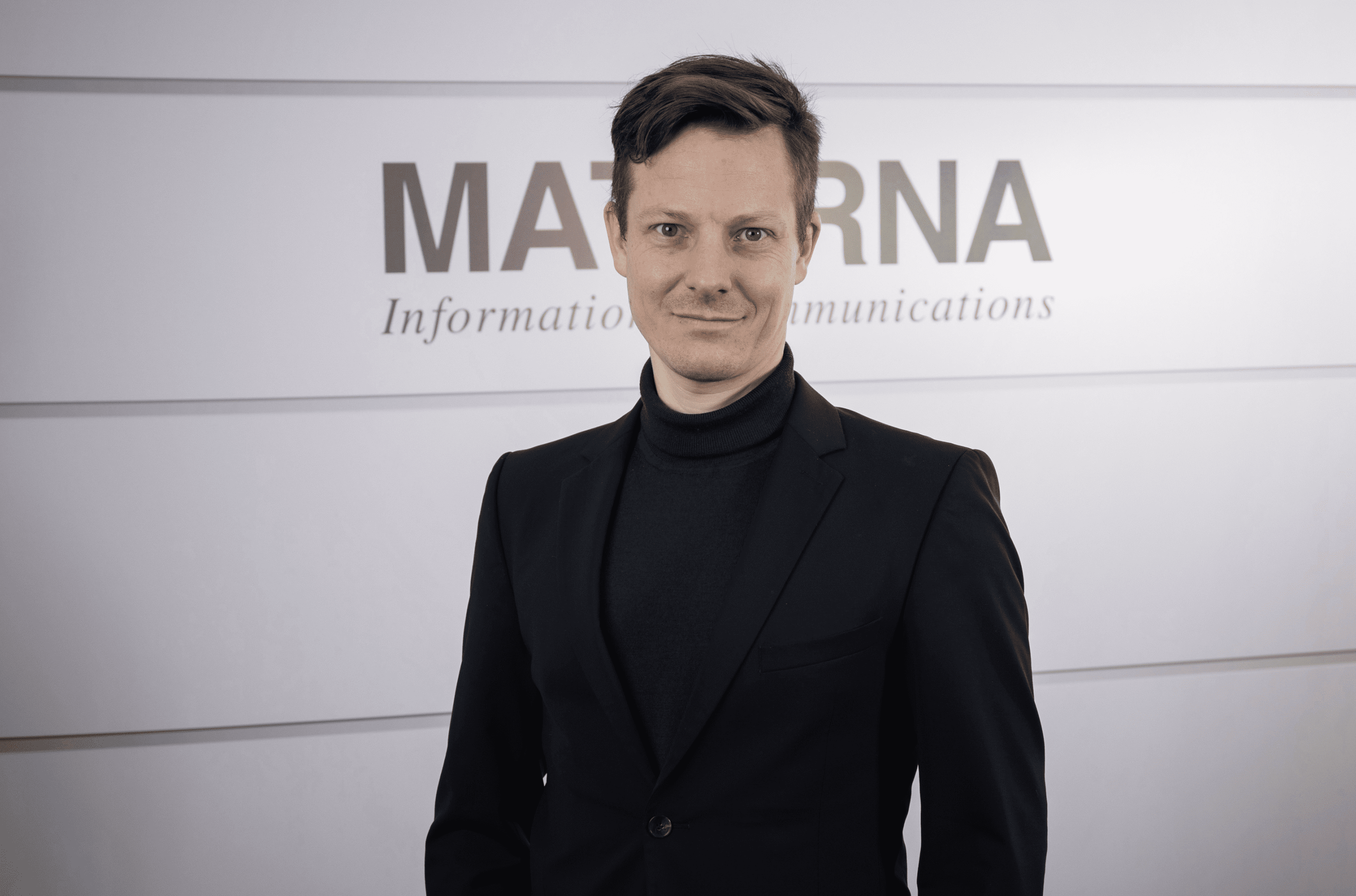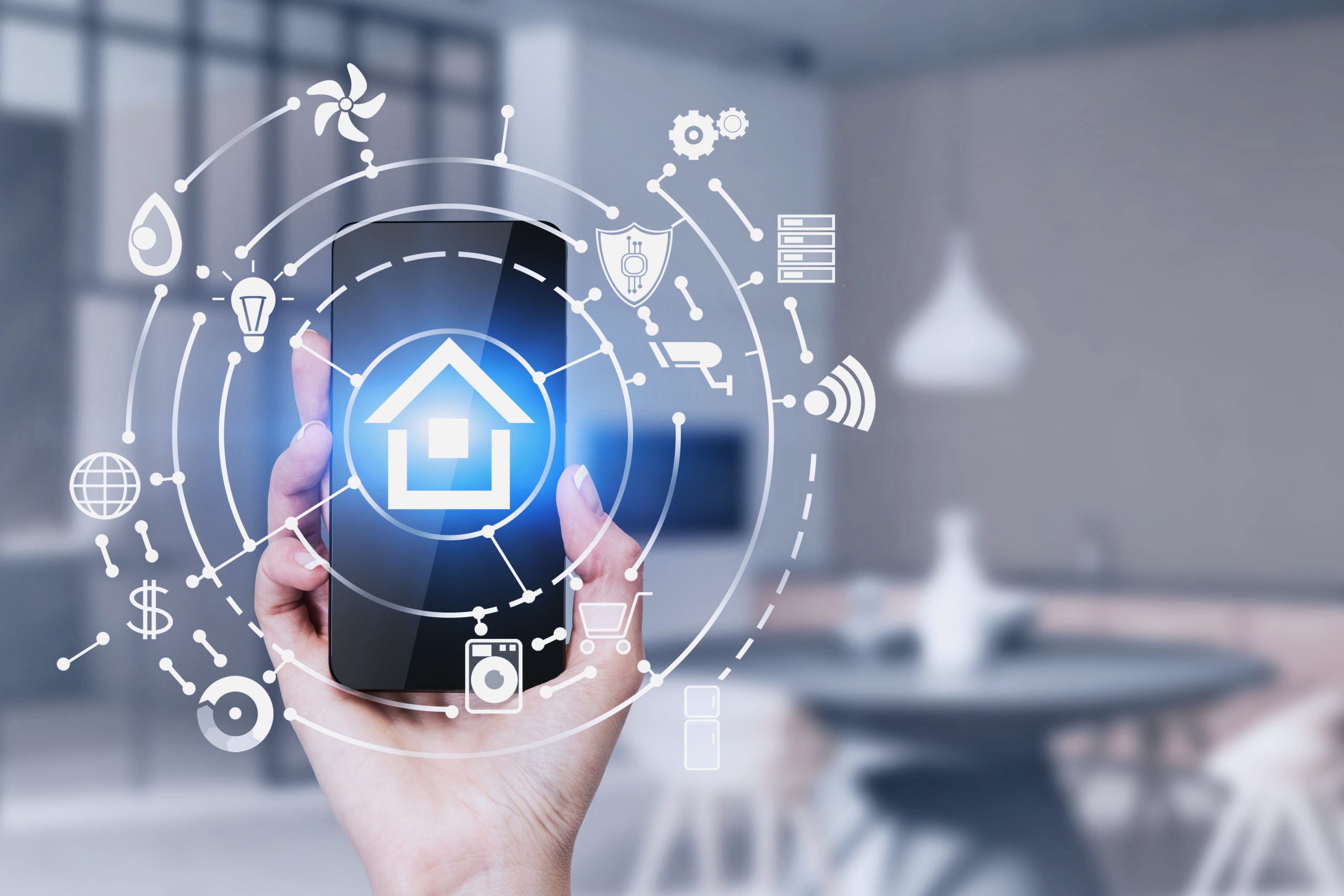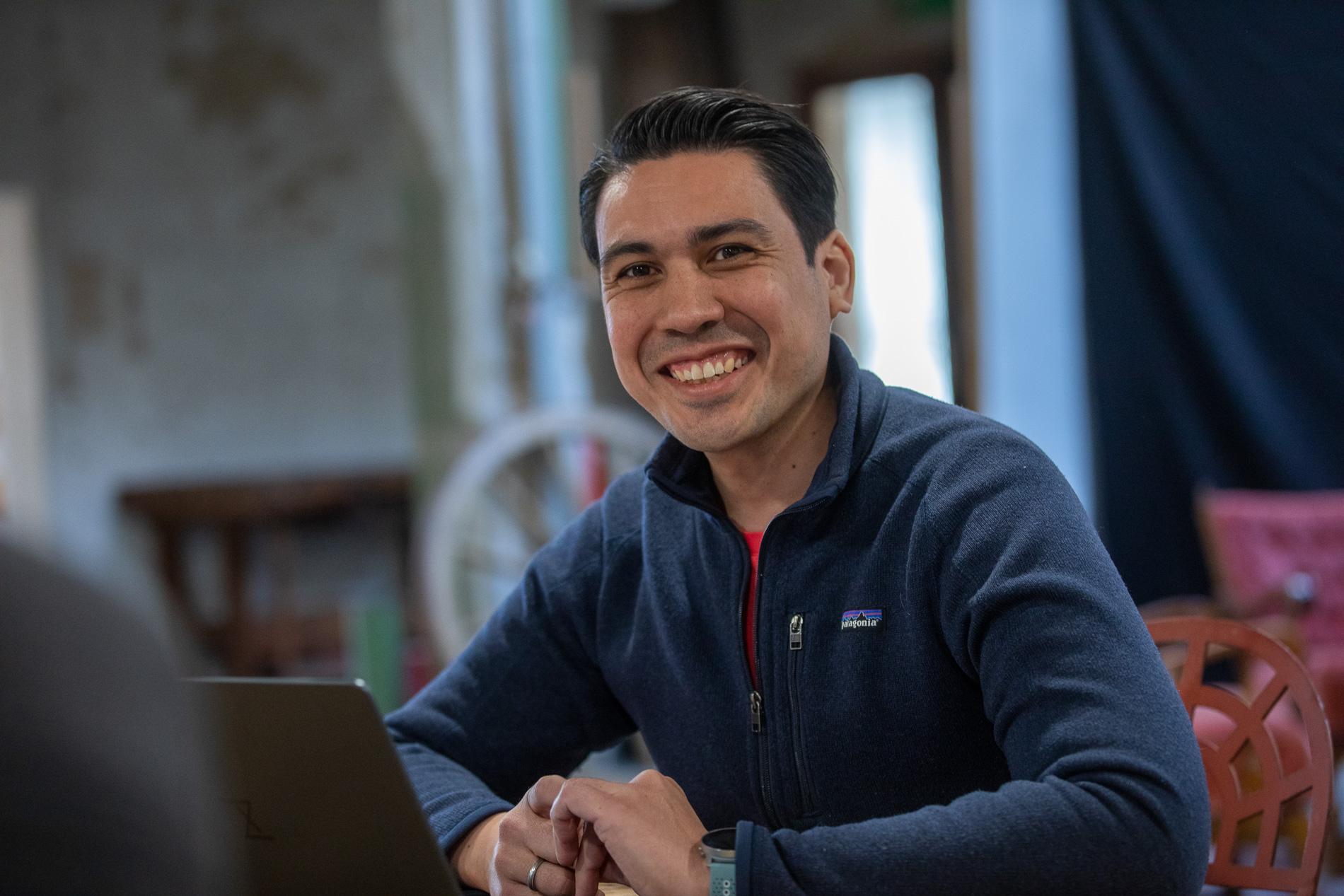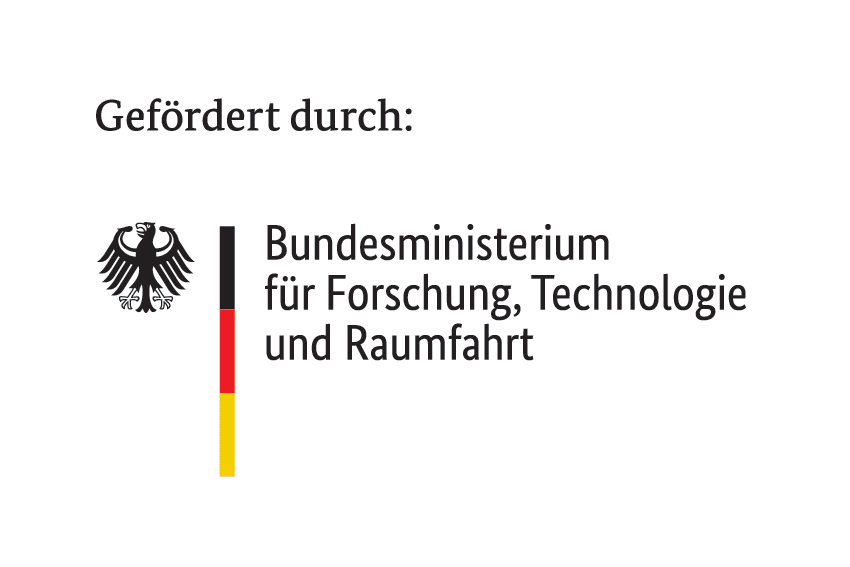“The development of the national access point for the SmartLivingNEXT ecosystem is the most important aspect of the project for us.”
10. June 2024
9 minutes
In this interview, Filip Milojkovic, Project Manager at Materna, talks about the company’s role as a consortium partner in the SmartLivingNEXT flagship project, the sustainable development of a SmartLivingNEXT ecosystem and the importance of the Dataspace Blueprint.

Mr. Milojkovic, you are the project manager for the SmartLivingNEXT flagship project at Materna. What role does Materna play in the technology program?
Materna is working in three major areas for the SmartLivingNEXT flagship project. The aim of the development is a mobile app for households, a web app and – last but not least – a national access point for the digital SmartLivingNEXT ecosystem. This development is probably the most important aspect for Materna. The result is simple, secure and manufacturer-independent data availability and therefore cost efficiency in the provision of new use cases. This requires several technological building blocks, such as a dataspace blueprint and an IoT backend. We also use software components from the Gaia-X reference architecture.
The mobile app provides energy cost transparency for tenants in an apartment building. The app will also show energy-saving tips for both heating and electricity consumption, tailored to the individual situation. But the mobile app is also interesting for landlords when it comes to tenant electricity projects in which the landlord acts as an electricity trader and sells the renewable electricity produced from the roof of the photovoltaic system to the tenants. Such projects also make the energy transition in existing and new housing attractive for tenants.
Behind the web app is an energy efficiency data portal. The web portal can be used to develop scenarios for optimizing greenhouse gas emissions. Landlords can also develop a multi-year cost- and energy-efficient refurbishment plan for their buildings. Landlords can also use the portal to release data that is helpful for municipal players in heat planning, for example. The ecosystem creates digital interfaces between municipalities, energy suppliers and the housing industry.
Setting up the SmartLivingNEXT ecosystem is a complex task that is likely to extend beyond the three-year funding period from the German Federal Ministry for Economic Affairs and Climate Action (BMWK). You and your team lay the technological foundations, such as the SmartLivingNEXT Dataspace, on which other projects can build to develop their use cases. What else needs to be done?
In order to build a sustainable data ecosystem that can function according to Gaia-X principles, a legal construct must also be created. The idea we are discussing with our partners from the flagship project is to create a so-called data room e.V. for the SmartLivingNEXT ecosystem. It has three essential roles. First of all, there are the members. They define the rules for the governance of the ecosystem. Secondly, there is a data trustee. This organizes and concludes contracts for the provision of data, the use of data and the commercial exploitation of data. Finally, the data trustee appoints one or more technical service providers, so-called federators, on behalf of the members. They operate the technical data room. They consult the data providers and ensure the implementation of contracts through technical solutions.
The members define the basic services, i.e. data processing, which are provided within the data room e.V. and which can also be obtained as open source components. Datenraum e.V. ensures that data and service offers can identify and present themselves and can be listed in a federated catalog. Other members of Datenraum e.V. are so-called providers or data owners. These include energy suppliers, IoT or metering service providers, heating system operators, manufacturers of white goods and automation systems.
The rules within Datenraum e.V. are based on the principles and understanding of roles in Gaia-X, which provides examples of implementation. Everything that happens outside Datenraum e.V. is based on the applicable legislation such as the GDPR, EU Data Act and EU Governance Act. These regulate the interaction with users and resource owners, such as tenants, technicians in the housing industry, municipal players, service providers or end users.
That sounds like a well thought-out approach to building the SmartLivingNEXT ecosystem. What can interested parties do to become part of this ecosystem?
During the funding phase, which runs until August 2026, you should become an associated partner of SmartLivingNEXT. Our partners receive first-hand information about our work and can attend general assemblies and various meetings. This gives you a head start in terms of knowledge and allows you to prepare sufficiently for participation in the SmartLivingNEXT ecosystem.
To turn interested parties into participants in the SmartLivingNEXT ecosystem after the funding phase, we can imagine six steps today. The first step is what is known as commercial onboarding. This ensures that interested parties meet all the requirements for membership of Datenraum e.V.. A contract is signed or, in the context of research funding, the associated partnership is submitted or registered.
Secondly, it is important that databases or services are processed semantically. This means that databases are translated into a machine-readable language that is also spoken by other partners. The Dataspace Blueprint, which focuses on and implements precisely these processes, helps with this. This means that many existing IoT backends or databases can be used as input, run through the processes in the blueprint and, on the other hand, can also be represented in a federated catalog as semantically processed things.
The third step is a technical onboarding into the Gaia-X services. This means that trust processes are run through. Service providers receive a certificate and an identity with which they can identify themselves to other participants. The next step is to set up connectors. We are currently working with the prototypes of the Eclipse Data Space Connector, which we are adapting for our purposes and developing for the ecosystem.
The representation of a service or dataset is then entered in the federated catalog. This catalog will be more or less publicly visible to the outside world; not the data it contains, of course, but only the services offered. They paint the picture that SmartLivingNEXT presents to the outside world. The final step is to establish a data connection between two Eclipse Data Space Connectors. These two connectors negotiate access to underlying data. They negotiate a contract, for example how long or to what extent data can be transferred.
You mentioned the Dataspace Blueprint, which helps to describe databases semantically. What exactly is this about?
There are already numerous IoT backends, some proprietary and some based on large hyperscalers, as well as countless devices. The challenge is to prepare these IoT backends and the data from these IoT backends in such a way that they can be found by everyone involved. The main reason why we need a dataspace blueprint is therefore not so much the data management itself. Rather, we need a solution to semantically enrich the data and create an access control system that enables the selective release and then transmission of data.
For the SmartLivingNEXT ecosystem, we are developing a federated catalog in which services, data packages and individual sensors and their telemetry and measurement data are made discoverable at a slightly higher frequency. Only then can services be offered from the perspective of a service provider. To this end, we are guided by the Gaia-X principles. This means that we facilitate an open, confident and trusting exchange between anonymous participants. Despite anonymity, the exchange is based on a sophisticated system of certificates and identities.
Mr. Milojkovic, thank you for the interview.
Listen to the article (in German)
Editorial office:
Maximilian
Metzner
Category:
Flagship project




